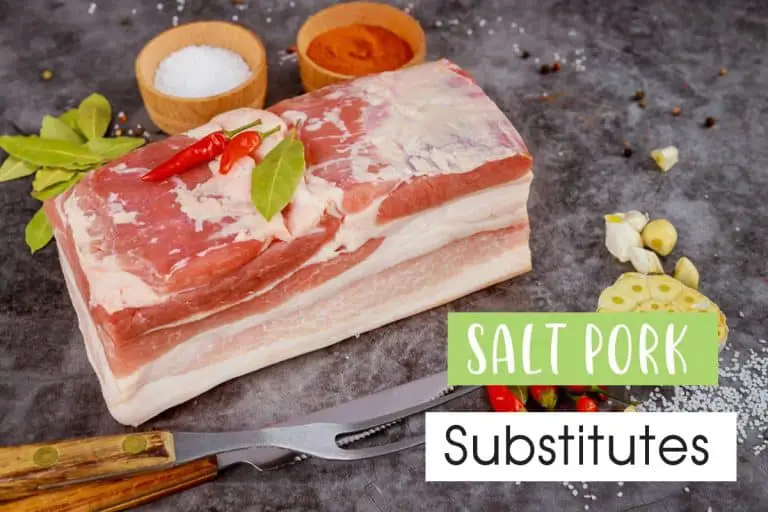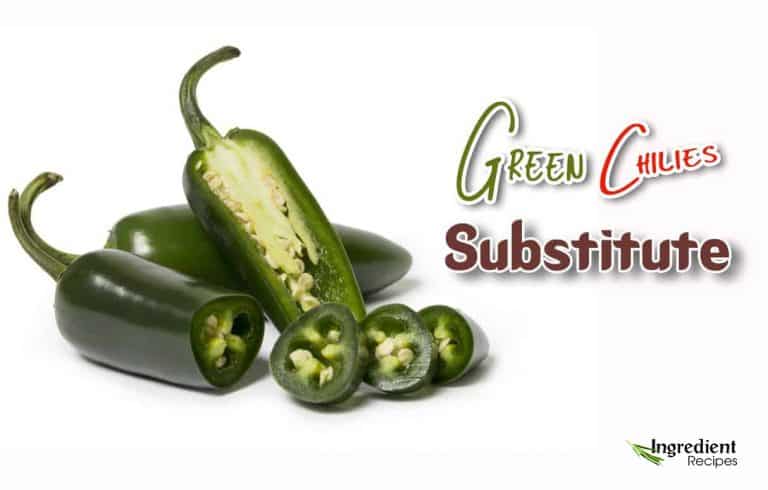
Due to its delicious taste and health benefits, seafood has become a popular cuisine in France and worldwide. However, some people may dislike it because they don’t get along well with the fishy and unpleasant smell.
So are there any solutions for this case, to get rid of seafood odor but still keep the full flavor and taste of dishes? The answer is Pernod.
If Pernod is not available in your market, you can turn to many other Pernod substitutes of great use for your French dishes.
What Is Pernod?

Pernod is a brand name of a liqueur called “pastis.” It’s popular in European countries and belongs to the family of spirits with an anise aroma. Pernod is related to ouzo in Greece and ojen in Spain.
Another famous French brand of this liqueur is Ricard. The leading characteristic of these drinks is their licorice flavor, created either with licorice or anise.
Pernod anise-flavored liqueur is presented in many French dishes. It also has a licorice-style sweetness and is used mainly in seafood dishes such as fish, mussels, squid, shrimp, and crab.
Traditionally, it is most often used with oysters. Pernod is great for mussels and seafood dishes with creamy sauces because it can eliminate the fishy smell of seafood, thanks to its unique flavor and properties. That’s why Pernod is perfect for people who want to take advantage of seafood benefits but do not want to get the unpleasant smell.
While Pernod has excellent flavor and properties, it’s not available in all stores. So if you can’t find one in your locality, let’s choose from some Pernod substitutes instead.
Pernod Substitution: 9 Best Recommended Alternatives
1. Pastis
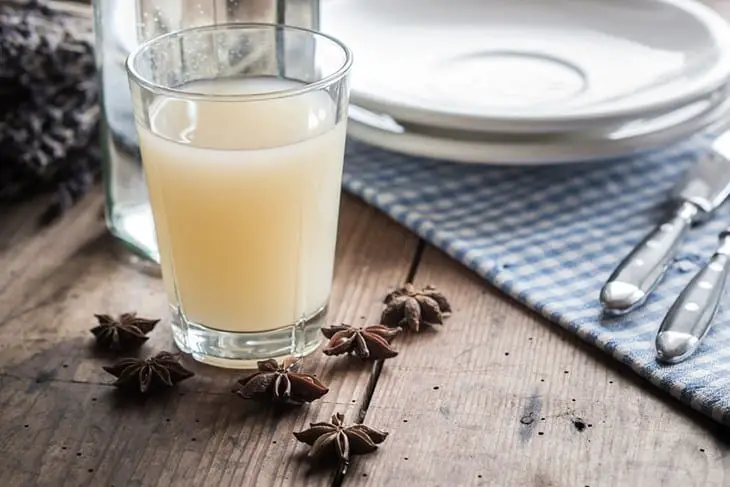
Pastis is a French drink flavored with anise, original from the same company that makes Pernod. Pastis is considered the best substitute of Pernod in French cuisine, especially seafood.
Pastis contains 40 to 45% alcohol, but the alcohol content decreases when you combine it with food. When you cook shrimp, oysters, or mussels, place a small glass of Pastis in the pot when it’s almost done. Pastis will give your seafood an excellent taste and aroma. Don’t worry about its high alcohol percentage because it will evaporate most of the time during cooking.
If you use Pastis to drink with meals, serve it with ice. When in contact with water, the oils in Pastis emulsify and become cloudy, creating a distinctive milky taste.
Dilute Pastis with more ice, depending on your drinking taste. Pastis brings a feeling of refreshment, helps get more comfortable and enjoyable. If you still feel the alcohol degree is too high, add more water to avoid getting drunk or burning your throat.
2. White Wine

White wine is the favorite drink of many people who love cooking, from homemakers to famous chefs, because its use is very versatile. The simplest way to use it is drinking with seafood dishes or directly in cooking.
White wine has a mildly sour taste for fishy odor ingredients such as fish, shrimp, oysters, mussels. Therefore, it helps not only to remove the fishy smell but also make the dish more attractive.
You should choose wines with high acidity for cooking and add them to the sauce at the last stage before serving. Some of the best choices include Sauvignon Blanc, Pinot Grigio, Pinot Gris, Pinot Blanc, Sémillon. They are both suitable for cooking French seafood dishes and are good substitutes for Pernod.
As with any other condiment used in cooking, you should be careful with the amount of white wine you use. If used too little, it is not enough to get rid of the fishy smell from seafood. But using too much is also not a good way; your dish will be like a cup of boiled wine without any other flavor.
3. Ouzo

The origin of ouzo is a drink called tsipouro, which comes from Greece. However, after distillation, the alcohol used to make ouzo has a higher alcohol content than the base liquor used to make other alcoholic drinks, such as tsipouro. Also, tsipouro doesn’t have to have an anise flavor, but ouzo does. It is made from grapes then flavored with anise.
As with any other anise-flavored drink like Pernod, it will be milky because of emulsification if you add a little water to the ouzo. However, ouzo has many attractive herbal aromas that make it a delicious beverage and a great cooking spice. Therefore, it can replace Pernod in many recipes such as French steamed fish, mussels in wine sauce, or baked scallops served with toast bread.
Although of Greek origin, ouzo goes well with French seafood dishes. However, because ouzo has a sweet taste, it can make your dish taste different from what you expect. So you should adjust the seasoning carefully if using ouzo as a Pernod substitute.
In addition, its sweetness could make you drink too much and get drunk quickly without paying attention to ouzo’s high alcohol content.
4. Sambuca
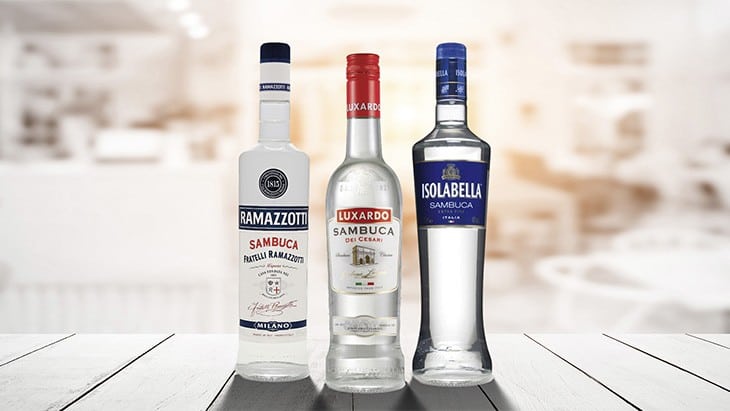
Sambuca comes from the Latin word “elderberry.” However, Sambuca doesn’t always contain berries in practice.
Sambuca was first commercially produced in Italy by Luigi Manzi in 1851. He claimed that it was a digestive drink and should be taken with meals.
It is produced by distilling pure alcohol from grains or molasses. The ingredients of sambuca include alcohol, anise, and sugar. Sometimes, people use green anise instead. In addition, sambuca may also include other ingredients such as elderflower, fennel, and licorice.
First, demineralized water is heated to about 70°C (150°F) and combined with sugar to make syrup. Sambuca contains a significant amount of sugar, equivalent to an average of 350 grams per liter.
The star anise is then blanched in boiling water and crushed before its essential oil is extracted and added to sambuca. This gives it a very distinctive anise flavor.
Like Pernod, many people use Sambuca to prepare French seafood dishes. However, you should use a small amount to avoid the food has too much anise taste.
5. Whiskey

There are many ways to enjoy whiskeys, such as drinking it hot or cold or making your favorite cocktails like the Manhattan or Old Fashioned.
But whiskey is also a great condiment in the kitchen, adding flavor to sauces, stews, and pastries like ice cream, puddings, macaroons. In particular, it helps to eliminate fishy odors very well for seafood dishes.
According to whiskey experts, it only takes a small amount of whiskey to make a dish more delicious. However, note that you should not use cheap whiskeys, or else it’ll become a nightmare.
Seafood dishes such as scallops, fish, and oysters go well with sweet, light malt whiskeys matured in casks. Whiskey can be used as a seasoning for sauces or added to the final stage of serving.
In general, smoky whiskeys such as Islay malt go well with fish and are often served with oysters or smoked salmon.
If you love the freshness of salmon but fear its fishy smell, whiskey will save your life, as Pernod can. Try this recipe and see how tasty it is.
Marinate and grill a slice of salmon for 15-20 minutes with a mixture of chili, ginger, olive oil, whiskey, peanuts, soy sauce, and lime juice. Then finally, serve salmon with the noodles and enjoy. This recipe is simple, but it’s a great way to pair whiskey with seafood.
6. Absinthe
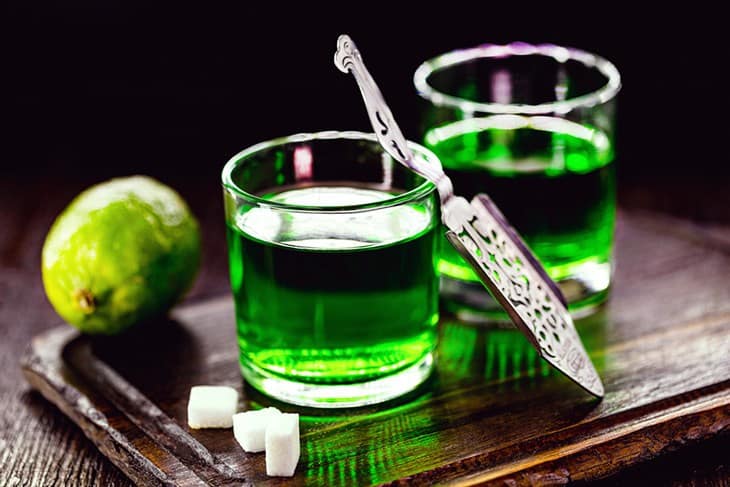
Absinthe is the name of a distilled spirit with a distinctive flavor. Like Pernod, it has a greenish-yellow color but quickly turns milky when mixed with water. Absinthe has a strong, dry aroma and a slightly bitter taste. With an alcohol content of 68%, it is a fairly strong wine and may not suit everyone.
The flowers and leaves of the wormwood plant are the main flavoring ingredients that make Absinthe. In addition, it also has licorice, marjoram, dill, angelica root, star anise. These ingredients give it a powerful herbal aroma. Absinthe was first commercially produced in 1797 by Henry-Louis Pernod.
Absinthe is one of the most captivating, strange, and mythical drinks in history for thousands of years. Many dishes can use Absinthe as a condiment, such as red meat, fish, oysters, omelets, and cheeses.
Chefs use absinthe from appetizer to dessert. Even Hugues Droz, the youngest French chef ever to be awarded a Michelin award, calls it “adding perfume to dishes” when he uses Absinthe.
And absinthe is not only used in luxury restaurants by Michelin-starred chefs, but it is ubiquitous in European cuisine. Therefore it is one of the most incredible Pernod substitutes you should try.
7. Vodka

Vodka is a strong alcoholic beverage originating in Russia. As the history of vodka, we learn that it is defined as a distilled alcoholic beverage, composed mainly of water and ethanol and sometimes with added flavorings.
According to historians, the word “vodka” was first written in 1405 in Polish documents. Throughout the 1940s, vodka’s popularity grew dramatically and remained one of the most popular spirits in the world.
Vodka is also used a lot in cooking, especially sauces. This alcohol is so popular that a type of sauce is named after it, called “vodka sauce.”
This unprecedented popularity of vodka stems from the fact that vodka has no prominent taste or smell. Therefore, it eliminates the fishy smell of seafood but does not change the taste of the dish.
So it’s a good substitute for Pernod and those who don’t like the taste of anise.
8. Lemon Juice

Unlike alcoholic beverages, lemon juice is a very acidic liquid that you can use to cook many dishes without worrying about them being alcoholic or intoxicating. In addition, it is safe for both children and pregnant women.
The method of preparing seafood with lemon is so popular that it has a name of its own: Ceviche.
Ceviche is a Latin American raw fish and seafood recipe marinated in lemon juice. The acid in the picture denatures the protein in the fish, making the fish opaque and creating a solid texture as cooked with heat.
Proteins are made up of long chains of amino acids, and when exposed to acids, these chains break down and arrange themselves into different configurations. So, although not cooked, ceviche is a way to make fresh raw seafood safe for health.
All in all, if you want unique and sour taste seafood dishes, use lemon juice instead of Pernod.
9. Anisette
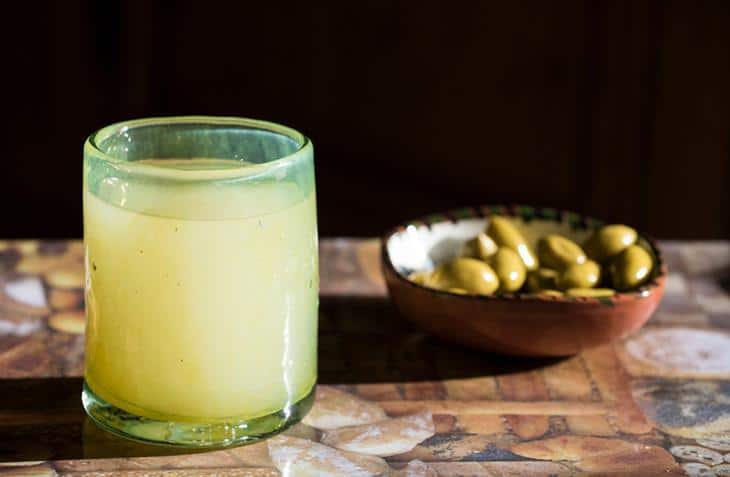
Anisette, or Anis, is an anise-flavored liqueur famous in most Mediterranean countries such as Malta, Spain, Italy, Portugal, Turkey, Greece, and France. Anisette is colorless and contains sugar, sweeter than brandy.
The distillation of anise results in Anisette. It has a flavor that closely resembles black licorice and is served in a variety of ways. You can dilute Anisette with water or add to other mixed drinks, or consume it directly.
Anisette was initially made to replace absinthe, an alcoholic beverage with higher alcohol content, and banned in some parts of the world.
Although not commonly used in seafood dishes like Pernod, you can also use Anisette instead. It has a clear anise smell which may be suitable for those who love this herb.
Anisette also has enough alcohol content to eliminate the dish’s fishy smell, so a little anisette in French seafood is a great choice.
Mixing Anisette with some regular vodka or Vodka Sobieski Rye is an easy method to have more tasty beverages. In addition, if a bit of sea salt is added to the anisette cocktail, it will create an irresistible charm for this drink.
Conclusion
There are many alternatives to Pernod in cooking or mixing drinks. If you’re wondering which is the best Pernod substitution, revise our above list and choose one. Give them a shot until you find the most desired option.
The answer should depend on your culinary style and the people you’re serving. If they are an anise lover, choose Anisette or Absinthe. If they are children or sensitive people, choose lemonade.
Good luck!

